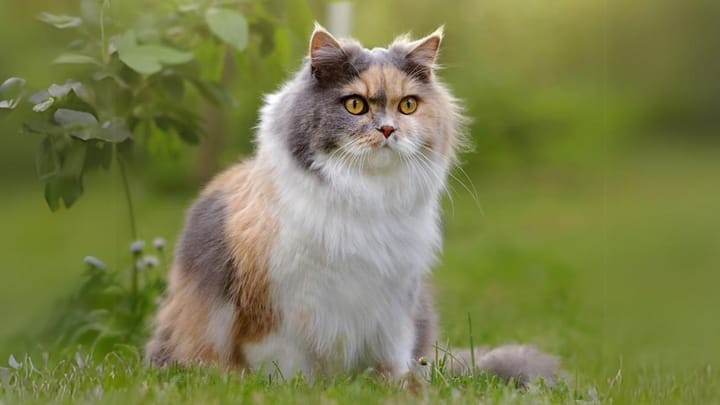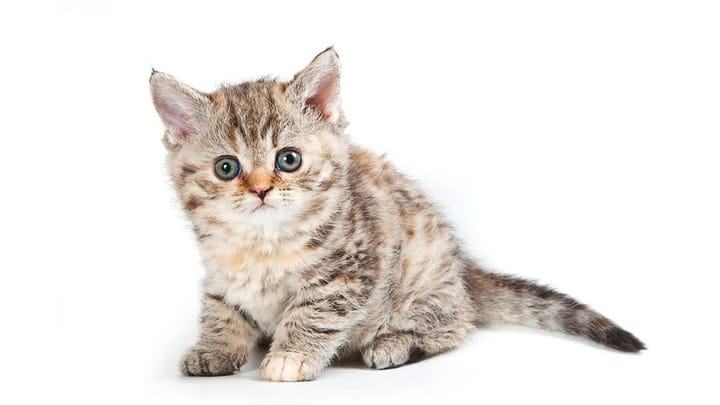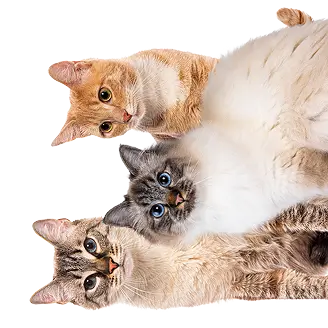Selkirk Rex
Other names : Longhair Selkirk Rex, Sheep Cat


The Selkirk Rex is a different breed to the Devon Rex and Cornish Rex, as their curls are not genetically identical. Also, they have significantly more hair than their Devon/Cornish counterparts. Their hair is also different to LaPerms, as their coat is more reminiscent of that of a sheep, thanks to the shape of their curls. Therefore it is unsurprising that they gained the nickname “Sheep Cat” !
|
Life expectancy |
The Selkirk Rex has a life expectancy of between 12 and 20 years |
|
Temperament |
|
|
Adult size |
Female
Between 12 and 12 in
Male
Between 12 and 13 in
|
|
Adult weight |
Female
Between 7 and 9 lb
Male
Between 9 and 13 lb
|
|
Coat colour
This breed comes in all colours: |
Black Brown White Red Cream Blue |
|
Type of coat
Mid-length, short. |
Short Long |
|
Eye colour
Blue, aquamarine, yellow, green. |
Blue
Green
Yellow
|
|
Purchase price |
The Selkirk Rex costs between £300 and £600 |
Their curls vary depending on the season, their age and also their hormones. Also, it is not until the age of two that their curls start to take on their adult appearance.
Their whiskers are also curly.
More details about the Selkirk Rex
Selkirk Rex: Origins and history
In 1987 in Wyoming, USA, a naturally curly haired kitten was born, who was named “Pesto of No Face”. She crossbred with a Persian and gave birth to six kittens. As three of them had curly hair, this proved that the gene responsible for their curly hair was a dominant gene, (unlike in breeds such as the Devon Rex or Cornish Rex). Further crossbreeding proved that the mother carried both the short hair gene and the long hair gene. So, when the breed was officially recognised, both the "Shorthair" and the "Longhair" Selkirk Rex were acknowledged.
The Selkirk Rex did not arrive in Europe until 1990 and it still remains a rare breed.
Physical characteristics of the Selkirk Rex
Selkirk Rex have the curliest hair of any cat in existence. Their round heads and short noses accentuate their big round eyes, that are set well apart from each other. Their fur is dense (particularly the Longhair), and their body is broad and muscular.
Selkirk Rex: Characteristics
Selkirk Rex: Behaviour
Breed compatibility Selkirk Rex
Selkirk Rex: Purchase price
On average, a Selkirk Rex kitten costs between £300 and £600. This price may vary depending on their breeder, lineage, age at purchase and even their sex.
It costs on average £25 / month to provide for a Selkirk Rex.
Selkirk Rex: Shedding
Average
The effects of their moulting depends hugely on whether they have mid-length or short hair.
Selkirk Rex: Grooming
A light weekly brush should be enough to remove the dead hair and to allow the cat’s curls to keep their form. Particular areas, such as their bellies and under leg should also be brushed weekly.
It is also advisable to regularly check and clean their ears to avoid wax accumulation. Similarly, their eyes should be checked regularly and in some circumstances, a vet may provide saline to cleanse their eyes.
Selkirk Rex: Health
Life expectancy of 12 to 20 years.
The density of their fur and the presence of an undercoat makes them fairly resistant to cold and hot weather, however they adapt better to cold situations.
To avoid weight gain, close attention should be paid to the nutritional quality and quantity of food given to a Selkirk Rex.
Selkirk Rex can develop the same illnesses as all other cats, such as oral diseases. However there are some diseases specific to the breed:
Hypertrophic cardiomyopathy is the thickening of the heart muscle. This disease can lead to heart failure due to arrhythmias, lung oedema, arterial thrombosis etc. Screening is done by means of an echocardiography examinatination, which is usually renewed annually. Treatment can be administered according to the results of the echocardiograph to improve the cat’s quality of life.
Polycystic kidney disease is a disease that results in the development of cysts that prevent the kidney from functioning normally, and lead to incurable kidney failure. Veterinary care and a specialised diet can delay the disease and improve the quality of the cat’s life so that they can live longer.
On average, females give birth to 3 or 4 kittens.







